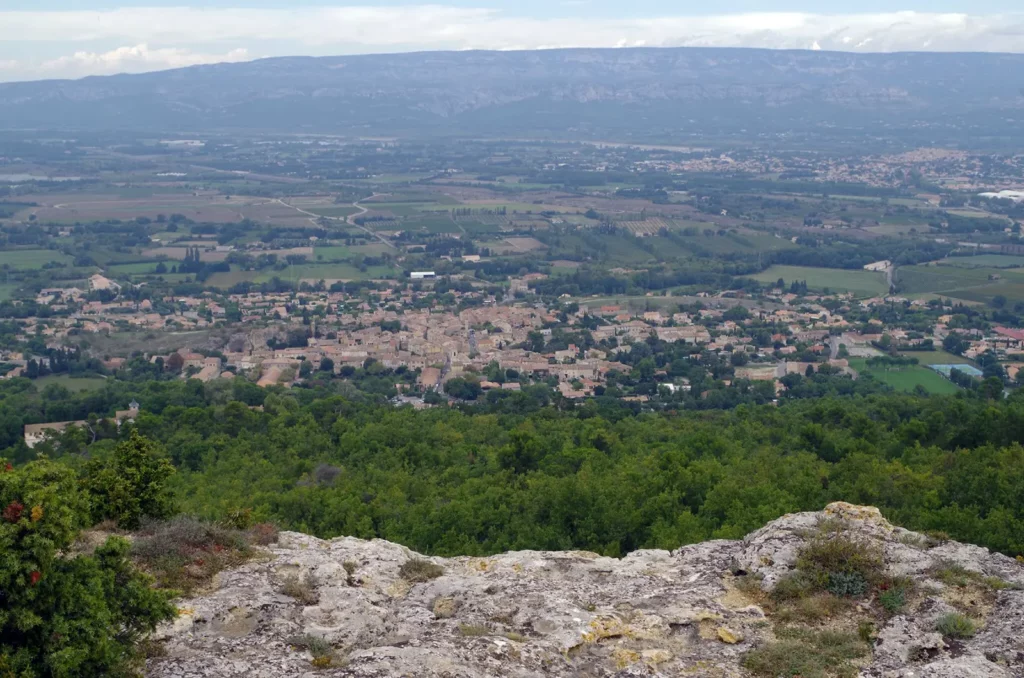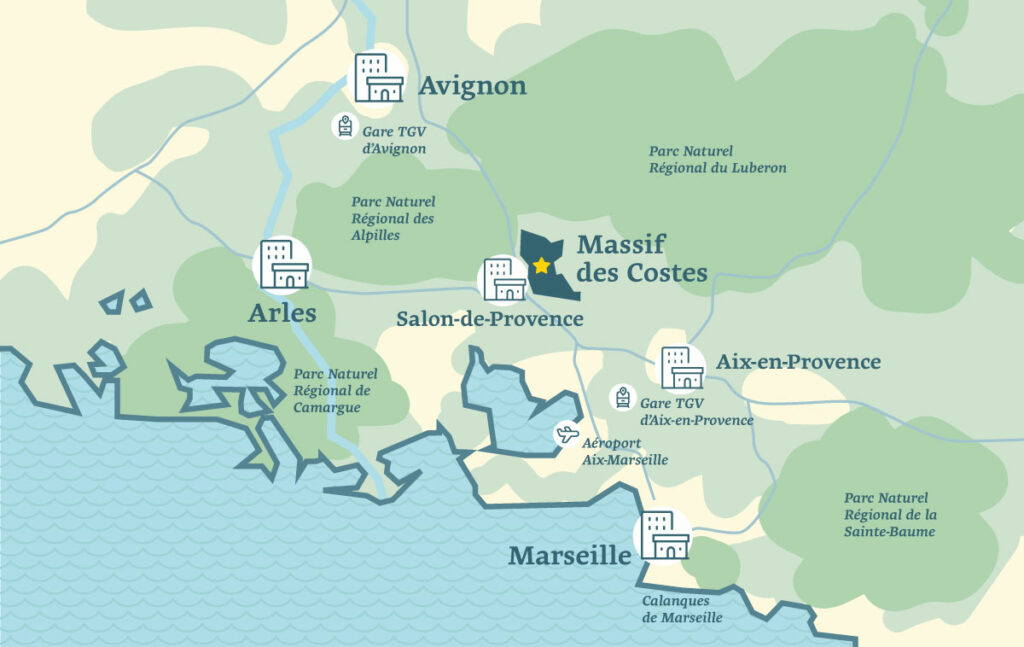1- Vernègues and the old plateau of the Grand Puech

When you arrive in Vernègues, you are at the base of the rocky promontory that shapes the Grand Puech plateau. It was on this site in the 8th century that the village was established, atop the ruins of the Castrum Alvernicum. Today, only remnants of this ancient village remain, surrounded by its 1830-era ramparts, offering glimpses into the narrow streets that were once inaccessible to carts.
This agrarian community gained notoriety on June 11, 1909, when a powerful earthquake measuring 6 on the Richter scale devastated Vernègues, leaving it nearly in ruins.
As you wander through this hauntingly beautiful village, ascend to the ruins of the old mill, now transformed into an orientation table. From this vantage point, you’re treated to a breathtaking 360° panorama of the Petit Luberon, the Durance plain, the village of Alleins, the Sainte-Victoire Mountain, the Alpilles, and on clear days, even the pond of Berre.
2- Terrace with a breathtaking view!
On the way back down from the plateau, stop off to sample some home-made ice creams and crêpes in the last remaining house in the old village. As well as treating yourself, you’ll discover a terrace with a breathtaking view!
3- Vernègues le Jeune
Below the historic village (Vernègues le Vieux), Vernègues le Jeune is built on an orthonormal plan, which is unusual in Provence. You’ll be amazed by this originality, which adds to the charm of the place. In 1911, Vernègues won the bronze medal in the modern village competition organised by the Office Agricole Regional du Midi, thanks to its orthonormal layout.
Don’t miss a visit to the Coquet art studio/gallery, where David and Sandra will be showing you, their work.
4- Château Bas
In ancient times, the ‘vernegais’ migrated to the more fertile Cazan valley, on the site of the Château Bas estate.

As you walk around the castle, a former seigniorial residence, you will come across the ruins of a temple built in the 1st century BC, evidence of the occupation of this area. The last vestige of a small ancient settlement, this temple was probably dedicated to a deity linked to the cult of water and was part of the first generation of Corinthian temples that preceded the Maison Carrée (Square house) in Nîmes.
Adjacent to this temple is the Romanesque chapel of Saint-Césaire. The chapel consists of a single nave with a semicircular vault, ending in a cul-de-four apse to the east. It bears architectural witness to the conversion of the pagan temple into a Christian sanctuary and to the material follow-up to these transformations.
5- The pilgrimage of St Symphorien

Introduced in the 6th century by Saint Virgil, the Saint-Symphorien pilgrimage has been held in Vernègues for hundreds of years. The saint, who was invoked to heal the sick and infirm, is now prayed to for rain.
In August, during the ceremony, adorned with his jewels, which bear witness to the Saint’s power and the gratitude of his protégés, the statue in its baldachin is accompanied from the parish church to the rural chapel of Saint-Symphorien by pilgrims and onlookers who have come especially for the day.
The procession begins at 4pm, after an initial stop at the Vernègues oratory. Pilgrims are welcomed at 5pm at the Saint-Symphorien chapel in the hamlet of Cazan. The procession continues to a new oratory surmounted by a cross, located 300 m from La Chapelle.
When the procession returns, the statue enters La Chapelle.
This is followed by a mass in French and Provençal.
The day ends with a picnic evening.



